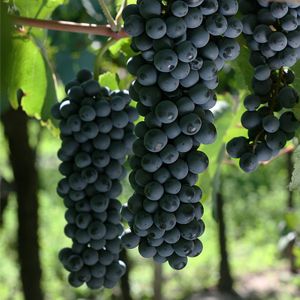 DELIVERY FROM £4.95
DELIVERY FROM £4.95 FREE DELIVERY FOR ORDERS OVER £100
FREE DELIVERY FOR ORDERS OVER £100Home » Community » Wine and Grape Guide » Bonarda

The Bonarda grape, historically rooted in the picturesque hills of Turin and Alessandria in Piedmont, is a red wine variety that has long been appreciated for its approachable character and deep color. While its exact origins are debated, its name is thought to derive from the Italian word "buono", meaning “good,” a nod to its agreeable taste and versatility in winemaking.
Traditionally cultivated in Piedmont, Bonarda has expanded its reach across Lombardy and Emilia-Romagna, where it is frequently used in regional blends. Its soft tannins, moderate acidity, and bright fruit profile make it an ideal partner for grapes like Barbera and Croatina, contributing structure, color, and subtle aromatic complexity. “Bonarda” can refer to different grape varieties depending of the region. In Piedmont, Bonarda is often another name for Uva Rara, while in Lombardy’s Oltrepò Pavese, Bonarda refers to Croatina, a genetically distinct grape.
During the 1990s, Bonarda experienced a modest resurgence in popularity, particularly in Piedmont, where local producers began blending it with Barbera to enhance aromatic expression and balance. This practice aimed to soften Barbera's naturally high acidity and bring greater roundness and floral nuance to the final wines.
The Bonarda vine is known for its vigorous growth and reliable productivity, which make it appealing to growers. It produces medium to large, compact bunches of grapes with thick, blue-black skins, a feature that contributes to the intense color of the wines. It is a late-ripening variety, requiring careful canopy management and controlled yields to ensure full phenolic ripeness, especially in cooler or wetter vintages. While the vine shows moderate resistance to disease, it can be susceptible to mildew in damp or poorly ventilated conditions.
Wines made from the Bonarda grape are typically deep ruby to purple in color, with a vibrant and juicy personality. They are known for being fruit-forward, offering intense aromas and flavors of red cherry, plum, wild berries, and occasionally delicate hints of violet or spice. On the palate, Bonarda wines tend to be medium-bodied, with soft tannins and moderate acidity, making them highly approachable and easy to drink when young. In some styles, particularly those produced in Lombardy, Bonarda is vinified as a slightly frizzante (lightly sparkling) wine, which adds freshness and a lively mouthfeel.



Before we say ciao, why not join our newsletter & stay up to date on everything happening on planet Italyabroad.com